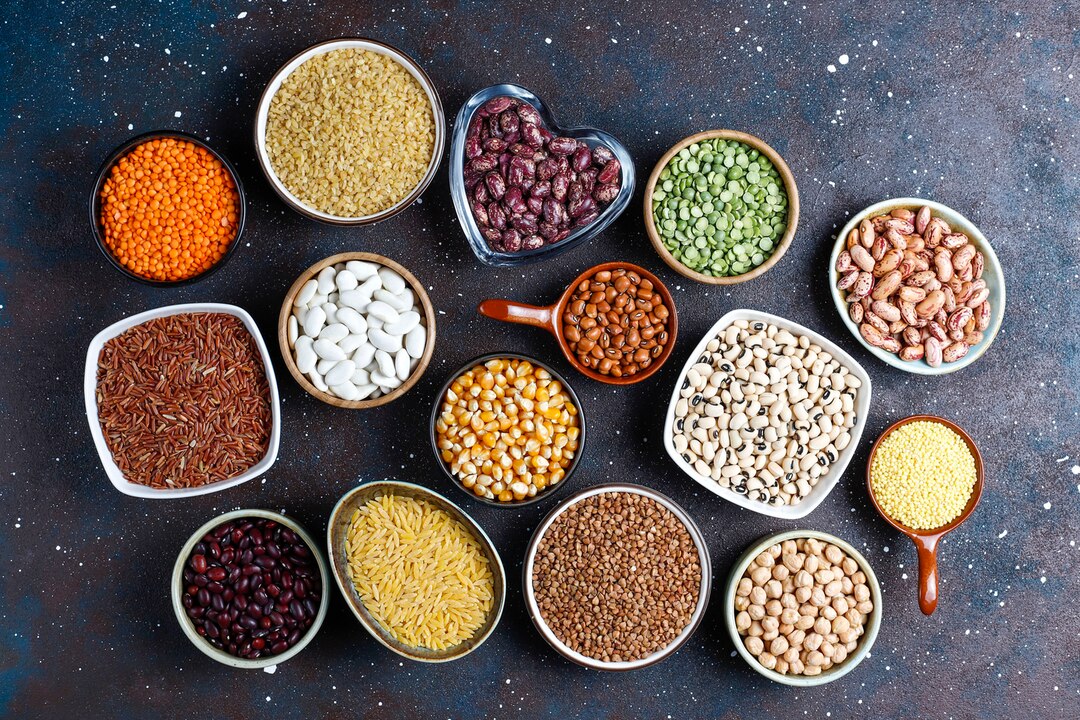In recent years, there has been a growing awareness of the health benefits associated with consuming whole grains. Unlike refined grains, which have been stripped of their bran and germ during processing, whole grains retain these nutrient-rich components, offering a range of vitamins, minerals, and dietary fiber. In this article, we’ll explore the importance of incorporating whole grains into your diet and provide tips on how to cook with less refined grains, opting instead for whole grain alternatives that nourish your body and support your overall well-being.
The Health Benefits of Whole Grains
Whole grains are a powerhouse of nutrition, providing a wide array of essential nutrients that contribute to optimal health. Some of the key benefits of incorporating whole grains into your diet include:
- Fiber Whole grains are rich in dietary fiber, which is essential for digestive health, weight management, and blood sugar regulation.
- Vitamins and Minerals Whole grains contain a variety of vitamins and minerals, including B vitamins, iron, magnesium, and zinc, which play important roles in energy production, immune function, and overall health.
- Antioxidants Whole grains are packed with antioxidants, compounds that help protect cells from damage caused by free radicals and may reduce the risk of chronic diseases such as heart disease, cancer, and diabetes.
- Satiety The fiber and protein content of whole grains can help keep you feeling fuller for longer, reducing the likelihood of overeating and promoting weight management.
Cooking With Whole Grain Alternatives
Making the switch from refined grains to whole grain alternatives is easier than you might think. Here are some tips for incorporating whole grains into your cooking and baking:
- Start Gradually If you’re used to eating primarily refined grains, transitioning to whole grains can take some time. Start by incorporating small amounts of whole grains into your meals and gradually increase the proportion over time.
- Experiment with Different Varieties There are many different types of whole grains to choose from, including quinoa, brown rice, barley, farro, oats, and whole wheat. Experiment with different varieties to discover which ones you enjoy the most and incorporate them into your favorite recipes.
- Mix and Match Don’t be afraid to mix whole grains together or combine them with refined grains in your recipes. For example, try adding cooked quinoa or barley to your favorite pasta dishes, or mix brown rice with white rice for a flavorful blend.
- Get Creative Whole grains can be used in a variety of dishes, from salads and soups to stir-fries and casseroles. Get creative with your cooking and experiment with different flavor combinations and cooking techniques to make whole grains the star of the show.
- Try Whole Grain Flour In addition to whole grains themselves, you can also use whole grain flour as a healthier alternative to refined flour in baking. Look for whole wheat flour, spelt flour, or oat flour, and use them in place of white flour in your favorite recipes for bread, muffins, pancakes, and more.
Sample Whole Grain Recipes
To get you started on your whole grain cooking journey, here are two delicious recipes featuring whole grain alternatives
Quinoa Salad with Roasted Vegetables
Ingredients
- 1 cup quinoa, rinsed and drained
- 2 cups mixed vegetables (such as bell peppers, zucchini, and cherry tomatoes), diced
- 2 tablespoons olive oil
- Salt and pepper, to taste
- 1/4 cup fresh herbs (such as parsley or basil), chopped
- Juice of 1 lemon
Instructions
- Preheat the oven to 200°C. In a large bowl, toss the diced vegetables with olive oil, salt, and pepper.
- Spread the vegetables in a single layer on a baking sheet and roast in the preheated oven for 20-25 minutes, or until tender and lightly browned.
- Meanwhile, cook the quinoa according to the package instructions. Once cooked, fluff with a fork and let cool slightly.
- In a large bowl, combine the cooked quinoa and roasted vegetables. Add the chopped herbs and lemon juice, and toss to combine. Season with additional salt and pepper, if desired.
- Serve the quinoa salad warm or at room temperature as a nutritious side dish or light meal.
Whole Wheat Banana Bread
Ingredients
- 2 cups whole wheat flour
- 1 teaspoon baking soda
- 1/4 teaspoon salt
- 1/2 cup unsalted butter, melted
- 1/2 cup honey or maple syrup
- 2 large eggs
- 1 teaspoon vanilla extract
- 3 ripe bananas, mashed
Instructions
- Preheat the oven to 175°C. Grease a 9×5-inch loaf pan and set aside.
- In a medium bowl, whisk together the whole wheat flour, baking soda, and salt.
- In a separate large bowl, mix together the melted butter and honey or maple syrup. Add the eggs, one at a time, beating well after each addition. Stir in the vanilla extract and mashed bananas.
- Gradually add the dry ingredients to the wet ingredients, mixing until just combined.
- Pour the batter into the prepared loaf pan and smooth the top with a spatula.
- Bake in the preheated oven for 50-60 minutes, or until a toothpick inserted into the center comes out clean.
- Remove the banana bread from the oven and let cool in the pan for 10 minutes before transferring to a wire rack to cool completely.
- Slice and serve the banana bread warm or at room temperature. Enjoy as a nutritious breakfast or snack.
Cooking with less refined grains and opting for whole grain alternatives is a simple yet impactful way to improve the nutritional quality of your diet and support your overall health and well-being. By incorporating whole grains into your meals and recipes, you can enjoy a range of health benefits, including increased fiber intake, improved digestion, and reduced risk of chronic diseases. So why not make the switch today and start reaping the rewards of whole grain goodness in your kitchen? Your body will thank you for it.








